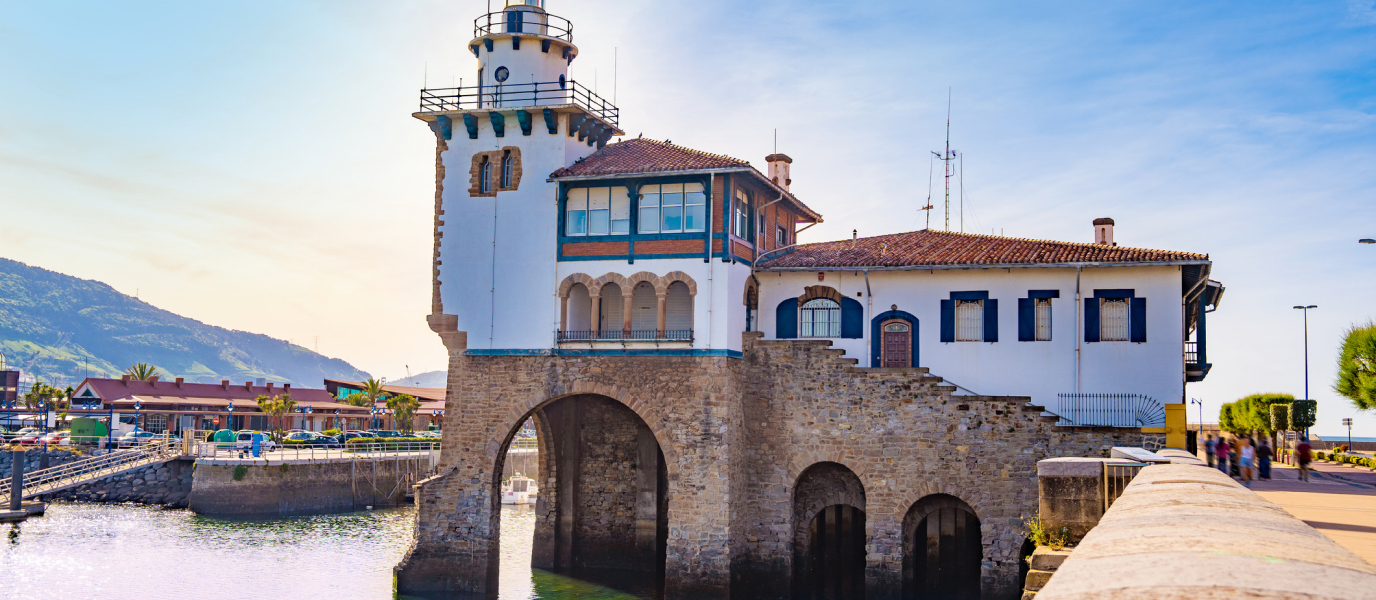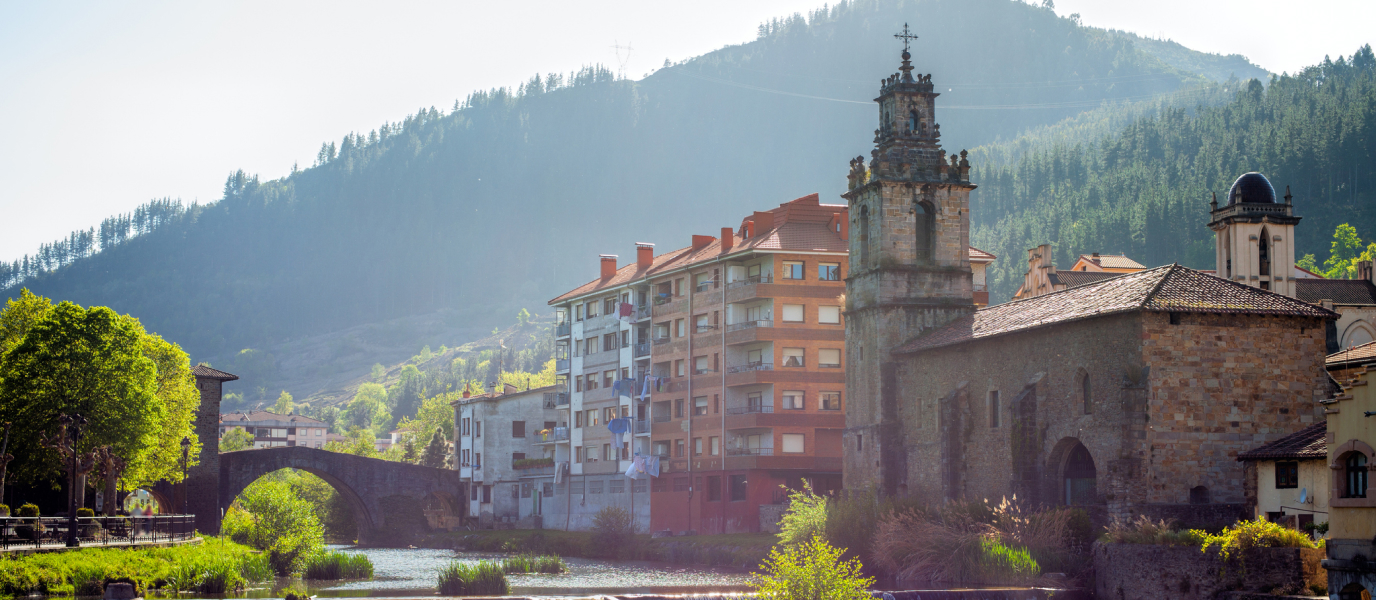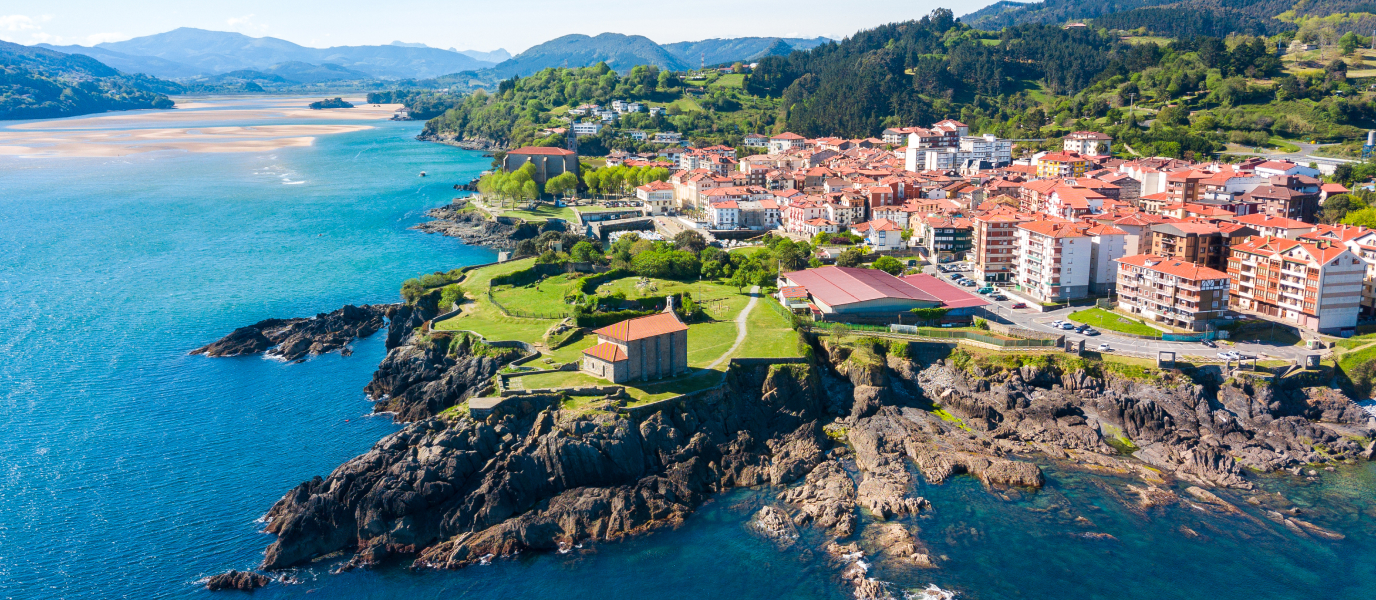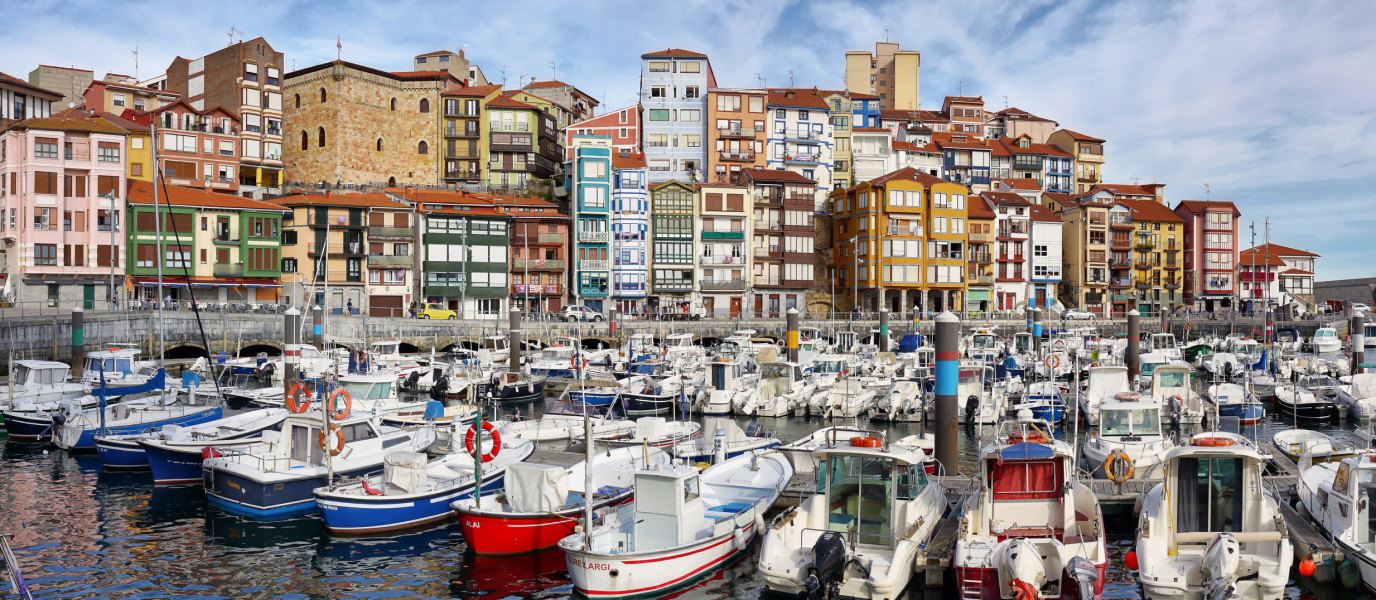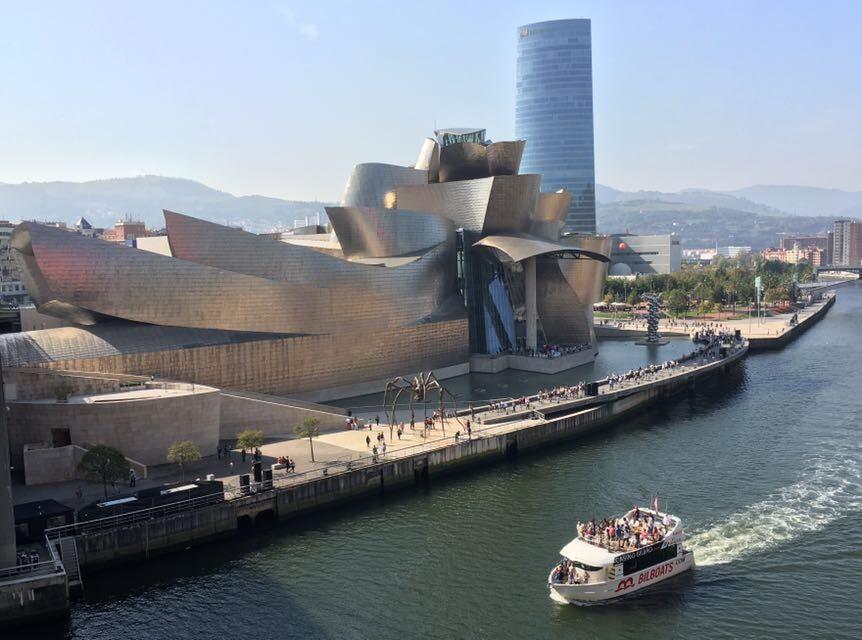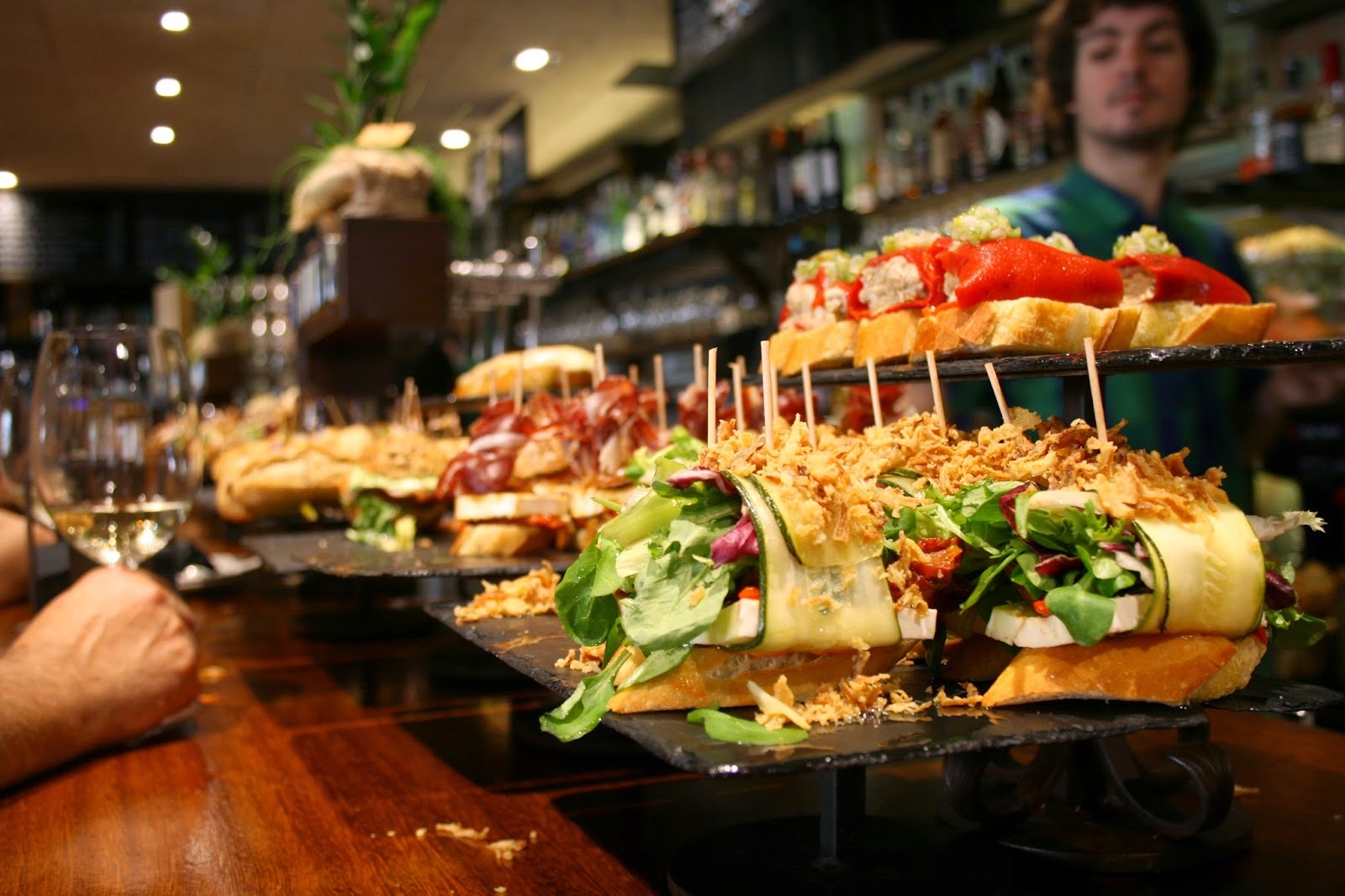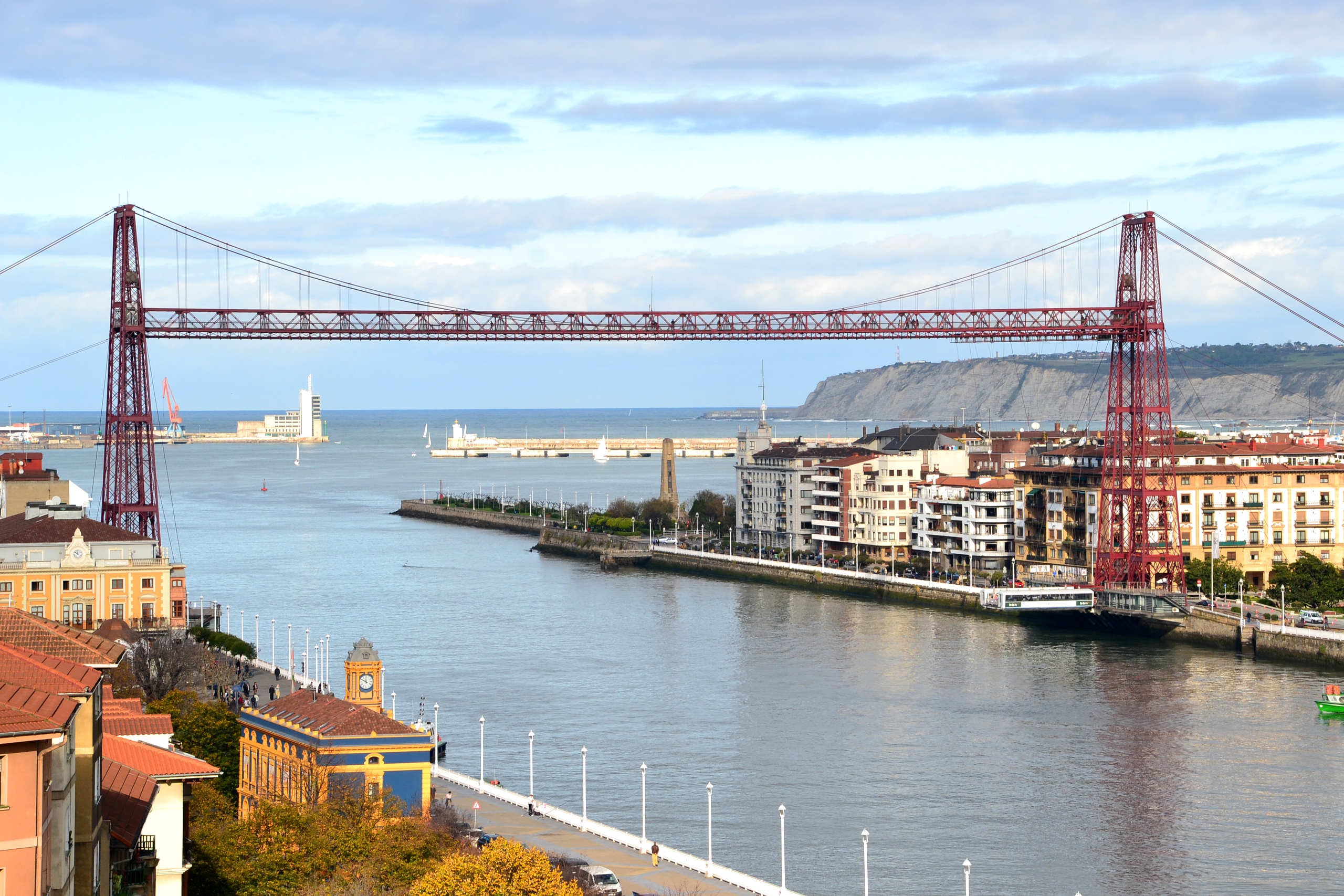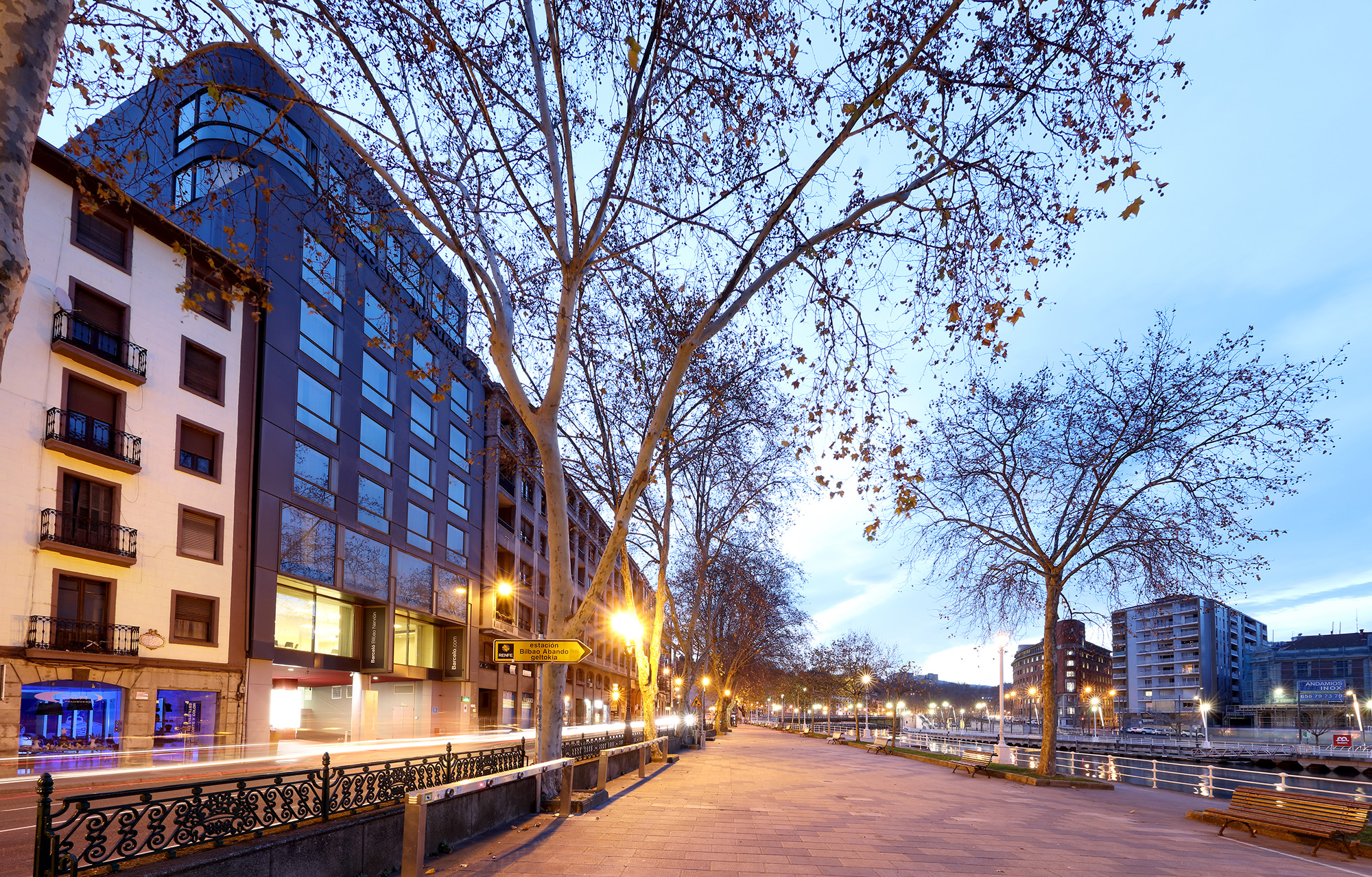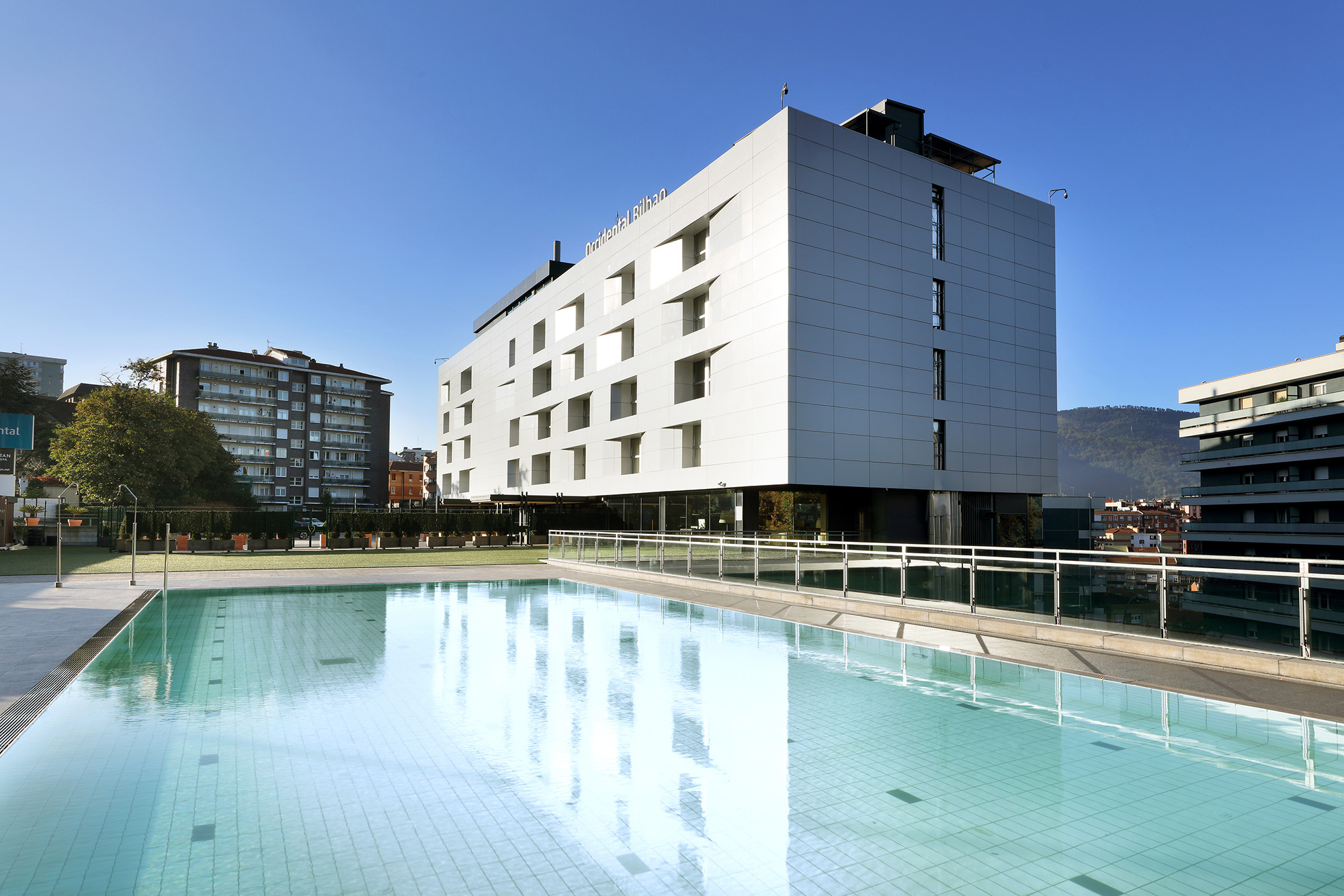At the end of the Bilbao estuary, where the waters of the Nervión, the Ibaizábal and the Cadagua flow into Abra bay before rushing into the Cantabrian Sea, lies the town of Getxo, a place where magnificent natural landscapes, lined with long beaches and cliffs, meet ancient history, tied to fishing, agriculture and shepherding. Society here in the late nineteenth century and early twentieth century thrived, leaving behind an opulent architectural legacy, which survives to this day.
Visiting Getxo allows you to enjoy the endless charm of the Bay of Biscay and its seafaring way of life, exceptional gastronomy, rich historical and cultural heritage, fairy-tale settings, art, boundless nature, fun activities and much more. In short, everything that an unforgettable getaway should include.
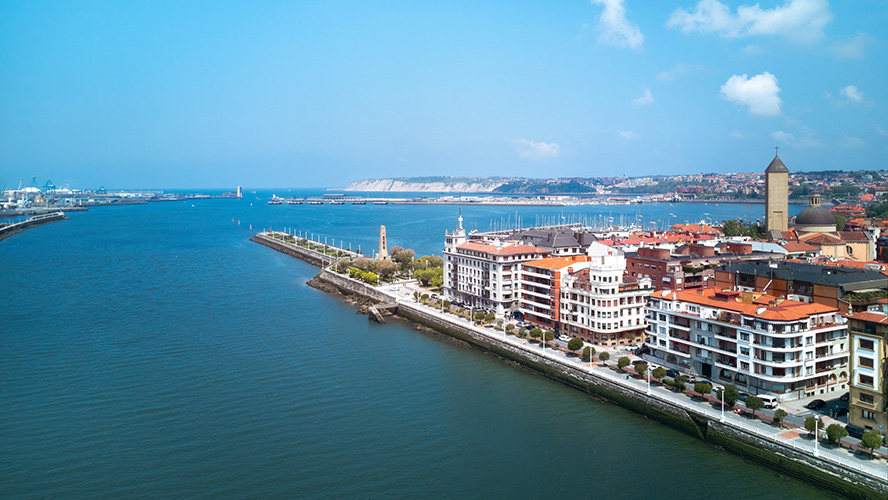
Must-see places in Getxo
Although this picturesque seaside town is known all over the world as a first-rate summer resort, it is also safe to say that Getxo offers unforgettable experiences at any time of the year.
And this is because its beautiful nature and rich cultural offerings—linked, no doubt, to the excitement of neighbouring Bilbao—mean there is something for everyone, from stunning walks along the cliffs flanking the estuary to Punta Galea, or forest baths in Azkorri, to feats such as the suspension bridge in Las Arenas or the large villas and mansions built by Biscayan bourgeoisie, as well as historical gems such as the chapel of San Nicolás de Bari, Aixerrota windmill, La Galea fort, the chapel of Santa Ana, Nuestra Señora de las Mercedes church and the Maritime Rescue Museum, among many others.
Suspension bridge in Las Arenas
One of the most characteristic attractions in Getxo is without a doubt Vizcaya bridge, also known as the suspension bridge, located at the point where the Bilbao estuary opens into the waters of the Cantabrian Sea. The spectacular iron structure, built in the late nineteenth century and declared a World Heritage Site by UNESCO in 2006, connects the Las Arenas area, in Getxo, with the neighbouring town of Portugalete.
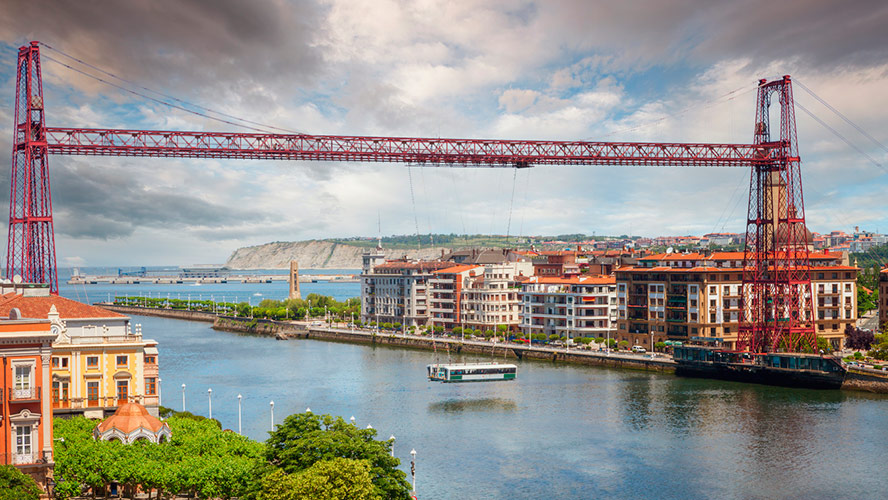
Designed by the architect Alberto de Palacio and the French engineer Ferdinand Arnodin, the transporter bridge stands 45 metres above the estuary (although its towers are no taller than 60 metres), spanning a distance of 160 metres between each bank. The gondola, suspended from the upper crossbeam by steel cables, transports both vehicles and passengers and operates 24 hours a day all year round (saving passengers from a detour of almost 20 km).
In addition to crossing in the gondola, you can also take the lift up to the upper walkway from where there are magnificent views of the estuary and the surrounding area. As well as an interesting guided tour in which you can enjoy the views, you can also learn about the operating mechanism of the gondola, the runners, the engines, the suspension cables and a general overview and history of this unique symbol of the industrial revolution experienced by the area at the time of its construction.
Getxo’s great mansions
Towards the late nineteenth century, Getxo became a popular place of residence for the wealthiest Basque bourgeoisie families, transforming neighbourhoods such as Atxekolandeta, Neguri and Zugatzarte, where huge villas and mansions were built, housing wealthy merchants and businessmen of the past and present.
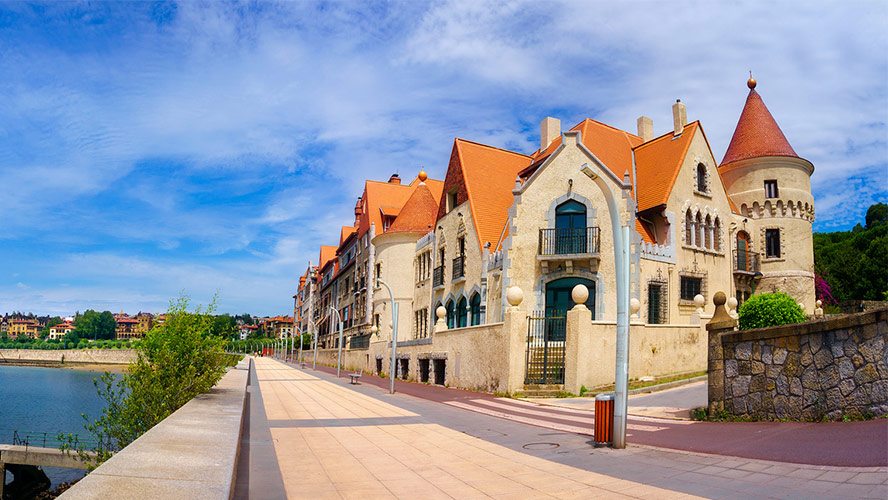
Getxo’s great mansions are a true architectural delight including examples of Basque regionalist style, traditional English architecture and some more eclectic styles blending Gothic, Baroque and French-influenced features, among others. Although you cannot enter them since they are private residences, taking a walk to see their façades and exterior details is worthwhile.
The urban route known as the “Great Villas Walk”, developed by the Getxo Tourist Board, comprises 29 interpretation panels and is an excellent option to help you learn about these important examples of heritage, including highlights such as Arriluze palace, Ampuero palace, Casa Vallejo, Eguzkialde palace, Cristina Etxea, Casa Cisco, Churruca palace, Bidearte and many more.
Getxo Marina
Gexto began as a small fishing village built around the old port of Algorta—currently one of its most picturesque spots—and since then its relationship with the sea has been unshakeable.
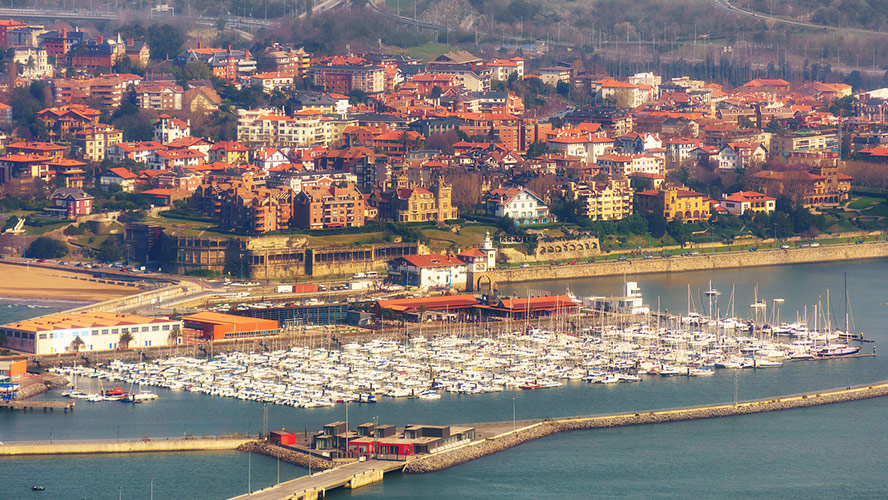
Today, the best example of this is the marina. Opened in 1997 on one side of Ereaga beach, on Arriluce dock, it offers a range of leisure, sport and dining options. In addition to the sea infrastructure itself, the marina has several shops, businesses offering different nautical experiences (sailing, paddle surfing and canoe hire, diving, etc.), an aquarium and six cinemas, among other options.
In terms of gastronomy, Getxo marina boasts around 20 restaurants offering everything from the finest fish and seafood to fast food franchises with something for all tastes and budgets.
Ereaga beach
Getxo is home to some of the most spectacular beaches in the Basque country and Ereaga, located in the heart of the town, between the old port of Algorta and the new marina at Arriluce dock, is without a doubt one such example.
Surrounded by villas and mansions, this long stretch of golden sand, almost one kilometre long, is not only a Blue Flag beach—an indication of the quality of its water and tourist services—but also the epicentre of Getxo’s beach life. Surfing, body boarding, windsurfing, jet skiing, canoeing, volleyball, sailing, concerts, its famous beach football tournaments… All this and much more can be found in Ereaga.
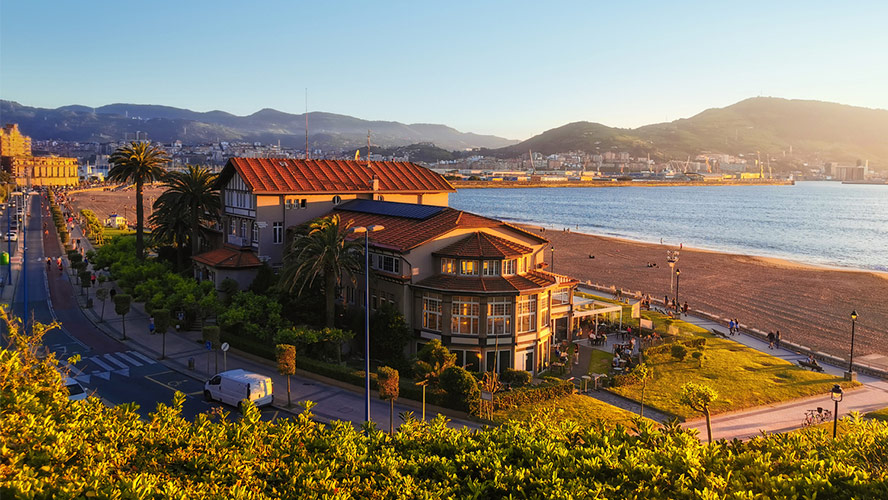
The beach has public toilets, changing rooms, showers, water fountains, bicycle storage, a children’s playground, several bars and restaurants and ample parking next to the beach, among other services. It is also accessible for people with reduced mobility.
Churruca dock
Together with the promenade of the same name in the waterside Portugalete, Churruca dock, officially called Evaristo de Churruca, sits at the end of the Nervión estuary before it meets the Cantabrian Sea and is named after the engineer who designed and oversaw its construction.
Churruca dock, situated next to Las Arenas beach and dock, was built in the late nineteenth century in order to provide Bilbao with an urban port with a direct connection to the sea for ever-growing industrial manufacturing. The Evaristo de Churruca monument is the main landmark for both the street and the landscaped promenade, in which the area is divided, offering some of the nicest views in Getxo.
Algorta neighbourhood
The neighbourhood of Algorta is the Old Port of Getxo and one of the places that best encapsulates the feel that the town must have had in pre-industrial times. Strolling among the old, colourful fishermen’s houses is a delight, although most people come to the area to enjoy the wide range of bars and restaurants.
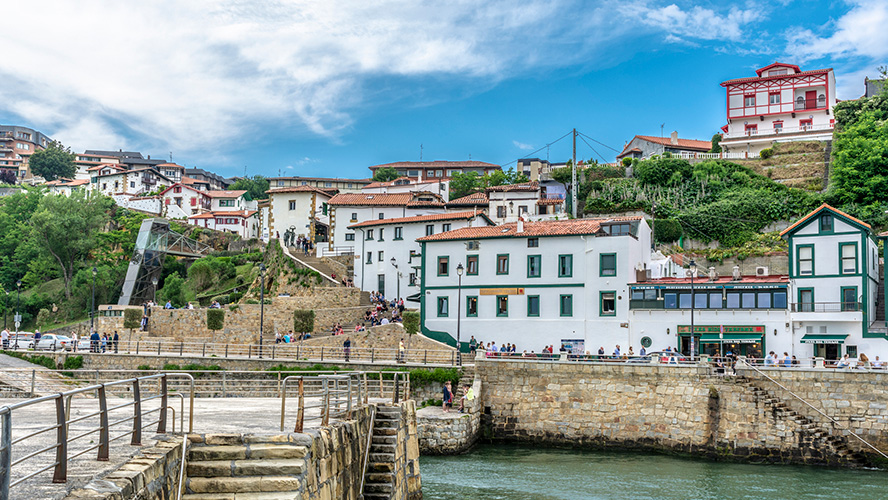
The Algorta neighbourhood has several buildings of interest, among them the old chapel of San Nicolás, dating from the seventeenth century and converted into a residence in the mid-twentieth century, of which its apse has been preserved; Etxetxu, an eighteenth-century building that was constructed to house the Fishermen’s Guild and was for a time the headquarters of Getxo Town Council, and the Riberamune stairway, which for centuries was the main meeting point for sailors and fishermen, offering an excellent vantage point over the sea.
Neguri neighbourhood
The Neguri neighbourhood is one of the most exclusive not only in Getxo but the whole of the Basque Country. The area is replete with mansions, many of them built from the late nineteenth century onwards by burgeoning local business owners.
The name of the neighbourhood comes from the union of two Basque words: negua, meaning “winter, and hiri(a), meaning city, an attempt by the municipality itself to attract wealthy residents, creating a residential area similar to La Concha beach in San Sebastián.
The most picturesque and photographed part of the neighbourhood is Paseo del Marqués de Arriluce de Ibarra, with views of Abra, between Punta Begoña and Lezama Meguizamon palace. It is here where the most striking buildings in the area are found, such as Galerías de Punta Begoña, Caserío Aizgoyen and Arriluze, Ampuero and Mudela mansions.
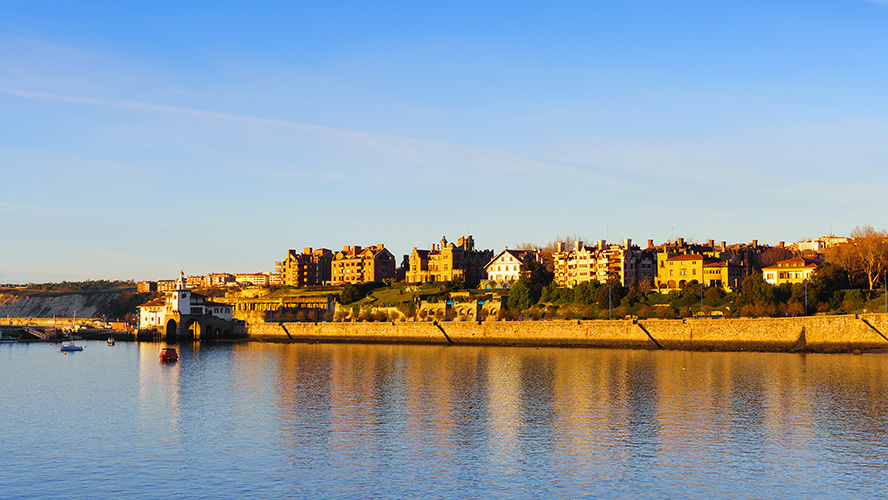
Surfing in Getxo
Getxo is a true mecca for fans of surfing. In fact, the Punta Galea Big Challenge world championship, considered the oldest big wave competition in Europe, is held on one of its most famous beaches each year (weather and swell permitting).
For those looking to try their hand at the sport for the first time, you can have your “surfing baptism” on Barinatxe beach led by specialised instructors, as endorsed by the local tourist board.
Those who prefer to ride the waves on their own can do so on either of the two beaches as well as on Arrigunaga and Ereaga beaches. There you will find several businesses offering equipment both for hire and for sale, in addition to experts who can provide information on the best times and spots for surfing in the area.
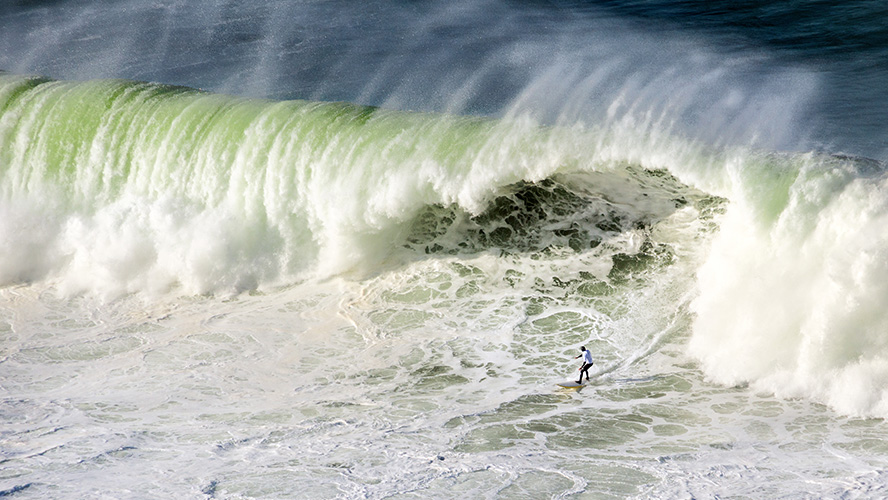
La Galea and the Aixerrota windmill
In the Andra Mari neighbourhood in Getxo, right on the cliffs of La Galea, stands this windmill, which was constructed in 1726. The windmill is one of the most attractive pieces of heritage in the town, due to both its history and scenic location overlooking a wide stretch of the Bay of Biscay.
The Aixerrota windmill is one of the few constructions of its kind in the Basque Country. Having ceased to mill grains for the production of flour many decades ago, today it has a new use as an exhibition space for the work of local artists.
Admission to the Aixerrota windmill is free and it is open every day of the week except Wednesdays, from 1:15 pm to 9:30 pm.
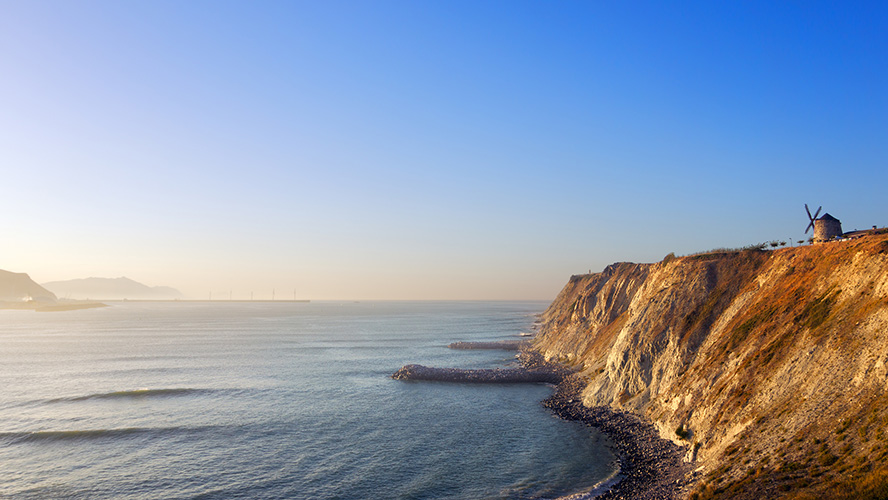
From there, via a cliff-side walking trail that leads to Punta Galea lighthouse, you can get to the fort of the same name in just a few minutes. Also known as Castillo del Príncipe, it consists of a defensive structure built in the eighteenth century, replacing a watchtower from the sixteenth century. Until well into the twentieth century it was used to monitor and protect the entrance to the Nervión. These days, although the building is in severe decline, the views from it are more than worthwhile.
Visiting Portugalete
Situated opposite Getxo, on the other bank of the Nervión, the town of Portugalete is well worth a visit. With much of its historical quarter still intact, the town is well connected to Getxo via the aforementioned Vizcaya suspension bridge and has a handful of attractions that are worth your time. These include the Town Hall building, dating from the nineteenth century and strategically located next to the estuary and the monument of the engineer Víctor Chávarri, and Santa María basilica (fourteenth to eighteenth centuries), which houses the largest walnut wood altarpiece in the world.
Strolling through the old streets of Portugalete is a true delight and the same is true for the seaside promenade and the old dock, which are connected via a pedestrian walkway to the nearby Santurtzi, on one of the most evocative routes with nautical and musical associations on the whole Basque coast.
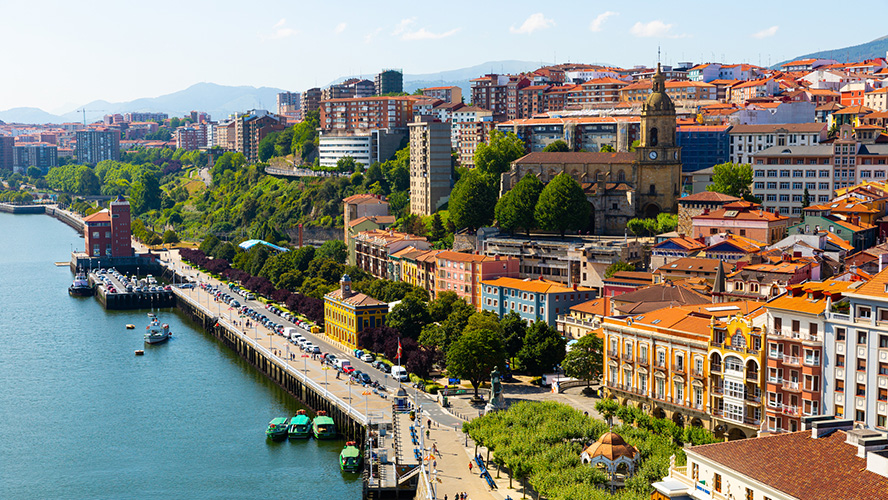
Where to eat in Getxo
Whether you want pintxos or linen-draped tables, gastronomy is one of Getxo’s strong points. Both traditional Basque cooking, modern cuisine and world flavours feature on the menus of this wonderful town. Eating in Getxo is a real pleasure so here are a few options to help you experience it for yourself:
- Pintxos bar in Romo, close to the Vizcaya bridge, perfect for some light bites or larger portions and, of course, the finest pintxos.
- Tamarises Izarra: New Basque signature cuisine made using the best raw ingredients, on Ereaga beach.
- Arrantzale Taberna: Located in the heart of the Old Port of Getxo, this picturesque bar stays true to Basque tradition by offering seafood and a wide variety of pintxos.
- Karola Etxea: Seasonal produce, grilled fish and seafood and all the flavour of traditional cuisine, also in the Old Port.
- Palacio San Joseren: Magnificent mansion on Avenida Zugatzarte, dating from 1916 and offering the finest traditional cuisine in a fairy-tale setting.
Gourmet shops and experiences linked to gastronomy, such as cooking workshops, tastings and more, are also an important part of the town’s culinary offerings. In summer various gastronomic events make Getxo an even more interesting place, such as the txipiropnes competition of the San Ignacio Festivities in Algorta on 31 July, and the marmitako competition during the Old Port festivities on 14 August, among others.
What to see around Getxo
The main place to see in the area surrounding Getxo is of course Bilbao. But, since this is quite obvious and a must-visit, here are some other equally interesting places to complement a visit to this fascinating town.
The first is the sister town of Portugalete, separated (or rather joined) to Getxo by the Nervión estuary and the famous Vizcaya bridge. A seafaring town with a winemaking history, the hills surrounding its beautiful historical quarter were once planted with abundant txakolí vines. This tradition led to the present-day custom of frequenting bars and taverns to enjoy the Basque white wine par excellence.
Portugalete is also linked to Santurce (or Santurtzi) via one of the most popular walking routes with the best views of the so-called left bank of the Nervión. Once in this traditional seafaring town, it is worth visiting its fishing port and strolling through its picturesque centre, before finishing up by tasting the finest seafood in one of its restaurants.
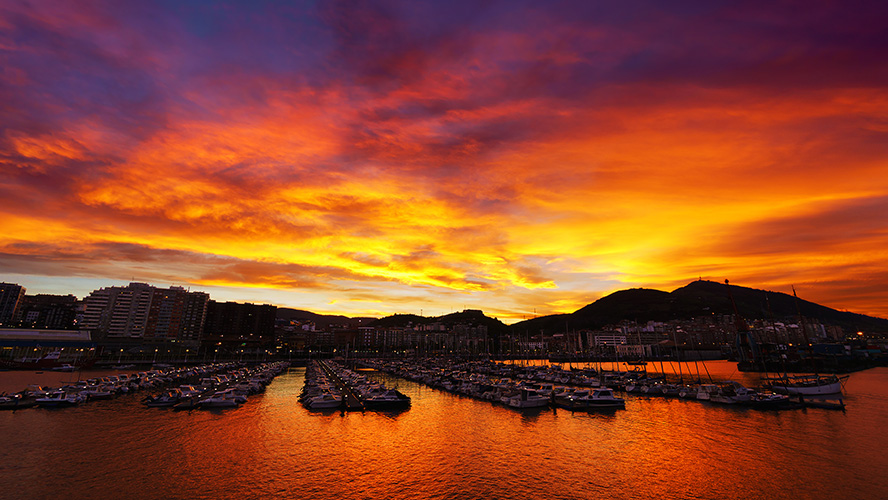
About 11 kilometres from Santurce is the small town of Muskiz, whose picturesque skyline includes Muñatones castle, which also overlooks a beautiful hilly landscape covered in meadows and, later on, the marshes of the Cantabrian Sea.
On the other side of the Nervión, not far from Getxo (around seven kilometres) is Sopelana (or Sopela), which has one of the largest and most beautiful beaches in the area. The same can be said of the neighbouring Górliz, on the bay of Plentzia. The towns make up an attractive route on this side of the Bay of Biscay, which also includes Barrika and Armintza, all surrounded by precious natural scenery.




































































